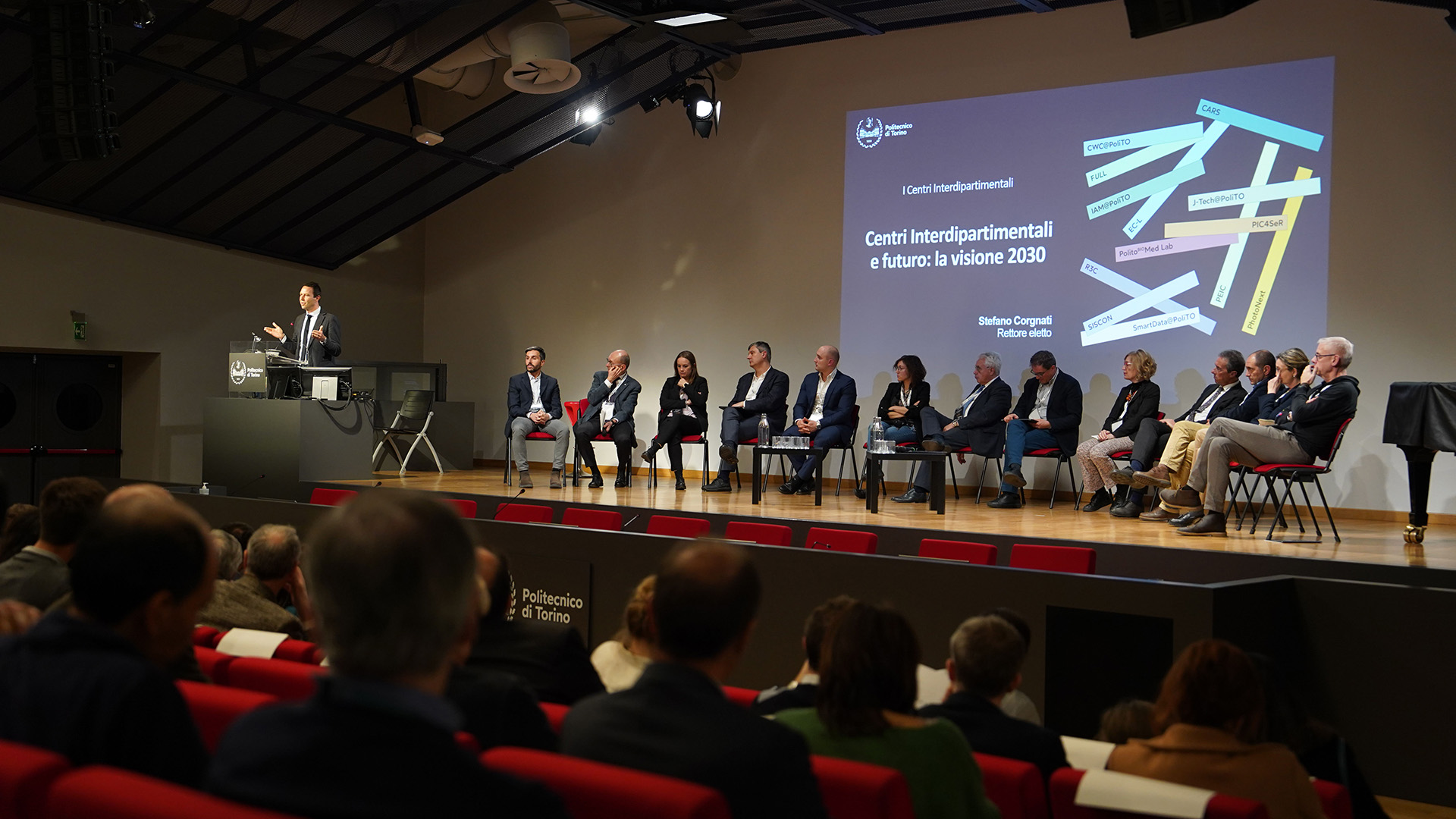
Politecnico di Torino present its 13 Interdepartmental Centers
What do Mars exploration missions, 3D cardiac interventions, and world-unique pilot desalination plants have in common? And what about energy communities, testing of power converters for next-generation vehicles, or public space management initiatives? They all originate from the work of the Interdepartmental Centers at Politecnico di Torino, which were officially presented to the university community and the wider public on February 21 in the university’s Aula Magna.
The event was designed to tell the story, showcase the activities, and share the achievements of the 13 Interdepartmental Centers, also through the launch of a dedicated publication.
These Centers were established as part of a major investment by the university to upgrade and expand its research laboratories and infrastructure, and they operate with a multidisciplinary approach in the most dynamic areas of scientific and technological progress.
Total investment in the Centers has now reached nearly €50 million, thanks in part to the INFRA-P grants provided by the Piedmont Region.
But beyond the numbers, these 13 Centers are also physical spaces where new ways of thinking - “New cultures”: are created through collaboration and dialogue among professors, researchers, and experts from diverse fields. By pooling expertise, enhancing both local and international cooperation, strengthening partnerships with key stakeholders in the socio-economic system, and boosting the university’s visibility and reputation, the Centers also offer experimental validation services for prototypes and processes, and serve as thematic entry points for external organizations seeking access to the Politecnico’s knowledge and resources.
Over 560 professors from the university are involved in the activities of the Centers. So far, 178 PhD scholarships and 132 research fellowships have been awarded, creating opportunities for hands-on learning experiences in cutting-edge environments. These activities benefit not only Politecnico students but also companies and public institutions.
The event opened with Rector Guido Saracco, who introduced “The Challenge of the Interdepartmental Centers”. This was followed by Vice-Rector for Research Matteo Sonza Reorda and Gianmario Pellegrino, Rector’s Delegate for the Development of the Centers, who presented “The Journey and the Results”—from the initial concept to current operations, highlighting key achievements, investments, and the people involved.
The heart of the event was the panel discussion titled “Lessons Learned and Defining Dimensions – Interdisciplinarity, Social Impact, Innovation, Education, and Infrastructure,” moderated by Paola Bosso, member of the Centers Committee and the University Board.
The panel featured the representatives of all 13 Centers: Nicola Amati for CARS (Sustainable Mobility); Alberto Tiraferri for CWC@PoliTO (Sustainable Water Technologies); Romano Borchiellini for EC-L (Energy); Loris Servillo for FULL (Urban & Territorial Regeneration); Luca Iuliano for IAM@PoliTO (Additive Manufacturing); Cristina Balagna for J-Tech@PoliTO (Advanced Joining Technologies); Radu Bojoi for PEIC (Power Electronics); Marcello Chiaberge for Pic4Ser (Service Robotics); Mariangela Gioannini for PHOTONEXT (Photonics Applications); Mara Terzini for PoliToBIOMed Lab (Biomedical Sciences); Grazia Brunetta for R3C (Responsible Risk Resilience); Bernardino Chiaia for SISCON (Infrastructures & Constructions); Luca Cagliero for SmartData@PoliTO (Big Data).
Each representative shared key insights and experiences from their Centers’ projects and collaborations.
The event concluded with remarks by Rector-elect Stefano Corgnati, who has been involved with the Centers since their inception. He focused on the future of the Interdepartmental Centers and the university’s 2030 research vision.
A networking session followed, where attendees had the opportunity to meet the research teams from each Center. The event drew over 300 participants, including more than 60 representatives from companies and local institutions.